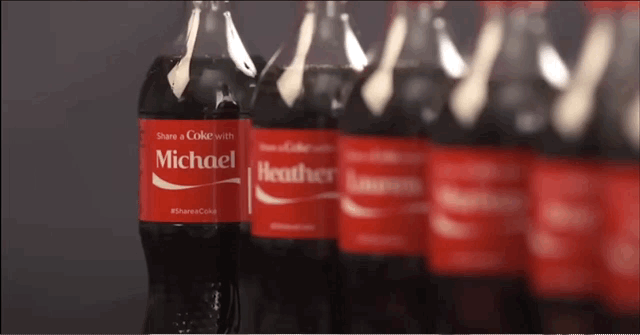
In an increasingly digital and personalized world, brands are struggling to find ways to stand out and connect with their customers. Hyper-personalization, the use of data to create unique and relevant experiences for each individual. A move that looks like a promising solution.
According to a McKinsey study, 80% of consumers are willing to pay more for a personalized experience. In addition, companies that implement hyperpersonalization can increase customer engagement by 30% and conversions by 20%.
However, hyperpersonalization also poses some challenges, such as data privacy and the possibility of falling prey to ad bombing.
Let’s take a look at the benefits and challenges of hyperpersonalization. Is this a fad or is it really the future of marketing?
Hyper-Personalization: The Avalanche Raised by Spotify Wrapped

Spotify Wrapped, a year-end analysis of users’ listening habits, has become a viral and widely copied marketing tactic since its inception in 2016. The campaign has been gaining popularity year after year, with more than 156 million users accessing Spotify Wrapped. in 2022.
Spotify Wrapped has been praised for its innovative and branded approach to fan advocacy. The campaign generated a 21% increase in app engagement and generated millions, if not billions, of dollars in free advertising for the streaming giant. It also opened up a new source of advertising revenue for the company.
The Ripple Effect in the Marketing Industry
The success of Spotify Wrapped has inspired other brands to adopt similar marketing strategies, leading to a proliferation of personalized year-end recaps across various industries. This trend has helped create a sense of ritual among users, creating an emotional connection with the brand and making it an integral part of their year-end festivities.
This trend has inspired other brands to follow suit and launch their own versions of personalized year-end recaps, such as Apple Music, YouTube, Nintendo and Duolingo.
Apple Music
Like Wrapped, Replay provides users with data and information about the artists, songs and genres they have listened to most in the past year. However, from what I’ve been able to see, its approach is much more minimalist and straightforward. It shows us the stats in an unattractive way on a separate website, rather than transporting us into an immersive experience like Spotify’s creatives do.
It also lacks the dynamic and visual features that have made wrapped a success on social media. It’s clear that Apple still doesn’t fully understand the power of data when it comes to artistic and personalized storytelling.
Youtube
While Spotify’s annual recaps are a fun experience to share, YouTube is trying to get people to share their experiences more often.
For this reason, YouTube Music has launched a new feature called seasonal recaps, a culmination of your best artists, songs, albums and playlists. «Spring Recap» will be the first recap users will be able to try. It is an extension of its Recap 2021 experience introduced last year.
According to the company, it received positive feedback after launching its annual recap last year.
Nintendo
Following in the footsteps of Sony and Microsoft with their year in review tools, Nintendo launched its own in 2023.
Log into the web app with your Nintendo account and you’ll see the first game you played on your Switch this year. You can then scroll through to see how many different games you’ve tried on the console, as well as your total play time.
Along with a breakdown of your most played games this year, Nintendo will reveal your gaming trends, i.e. a graph that breaks down your Switch play time by genre. Naturally, Nintendo will condense these details and information about your busiest months in terms of play time into shareable cards.
Duolingo
Duolingo compiles a yearly summary of all your important statistics. It spans 10 pages and provides details on things like how much XP you earned, your longest streak, and your ranking compared to other Duolingo users.
It is available on all platforms (iOS, Android and web) and can be accessed throughout December.
The Duolingo annual summary should appear automatically if it is available in your account. You can then access it from your learning path by tapping the button in the bottom left corner on mobile devices.
Hyper-personalization beyond summaries: customers demand personalized experiences
In 2024, customers increasingly expect personalized interactions that are tailored to their unique preferences and needs. This thirst for personalized experiences is driven by the digital revolution, which has conditioned consumers to demand relevant, individualized content.
Hyperpersonalization leverages AI and big data to go beyond basic segmentation techniques that group people by demographics. Instead, it analyzes individual user data, such as browsing history, to gain detailed insights into each person’s tastes. This allows brands to create personalized offers that resonate more deeply.
The tech wizards behind it all are artificial intelligence and advanced analytics. They enable companies to deliver personalized content and product suggestions at every touchpoint. AI tailors recommendations to each user in real time while streamlining user experience design through automated research and content curation.
The success of hyper-personalization campaigns like Spotify Wrapped shows that today’s marketplace demands intimacy and relevance from brands, and this data-driven approach demonstrates that brands that can reach both the heart and mind of the customer will succeed in the coming era.
Those businesses that are able to deliver highly personalized experiences will be the leaders in building loyalty and bonding with consumers. Spotify seems to have discovered the perfect formula for success in this new landscape. Something that many others are keen to emulate.
The Return of Personalized Physical Products

In 2023 we will find some highlights such as Nike By You. It allows customers to design their own dream sneakers with premium materials, fostering a personal bond with the brand. Beyond Wrapped’s digital experience, Spotify also offered limited edition merchandising with personalized stats and playlists.
In this way, it allowed fans to physically commemorate their musical journey. And subscription services such as Graze and SnackNation gained popularity with their snack boxes customized to individual preferences and dietary needs.
The resurgence of this tangible personalization, whether through a printed name, special design or customized gift, reinforces brand affinity. Innovators continue to push the boundaries, so the best campaigns are yet to come.
The Challenges and Concerns Surrounding Hyper-Personalization
While making it possible to offer highly individualized services, this trend also poses several challenges for companies. One of the main ones is data privacy, an issue of growing concern for consumers. Most countries already have data privacy laws, so companies need to be more transparent about what information they collect and how they use it. This transparency is essential to build and maintain customer trust.
Another risk is that excessive personalization can be disruptive and damage brand reputation. This emphasizes the importance of finding the right balance between individualization and privacy, ensuring that consumers feel understood without a sense of intrusion.
In addition, their proper implementation demands large amounts of data and resources. These are machine learning models that need to analyze abundant data to generate valuable conclusions and accurate predictions. Therefore, companies need to invest heavily in infrastructure, data collection and analysis, as well as regulatory compliance.
Hyper-personalization promises customer-centric experiences, but in an evolving digital world, it faces challenges that brands will need to address carefully if we are to harness its potential.
Where Hyper-Personalization Is Headed
Hyperpersonalization is not a fad, but a paradigm shift in marketing driven by the exponential growth of artificial intelligence and big data. As Scuba Analytics indicates, 76% of consumers want to see personalized communications when considering a brand. And 78% said personalized content made them more likely to buy a brand’s products again.
To achieve more widespread adoption, companies must address challenges such as data privacy and make the right investments in infrastructure and training. As technology continues to evolve, hyperpersonalization will become even more sophisticated and impactful.
Ultimately, it offers brands a powerful lever to deliver deeply individualized experiences that foster customer engagement and loyalty. Early adopters of these innovative marketing strategies will be better positioned to lead the next era of authentic and meaningful relationships with consumers.
The responsible use of hyper-personalization will take the customer experience to new heights. It will usher in more authentic, trusted and valuable interactions. But to reach its full potential, companies will need to carefully consider both the benefits and the risks, and always put consumer privacy and well-being at the center of their mission. If developed ethically and consciously, this approach will enhance brand-customer relationships.
